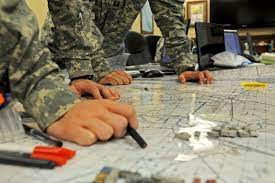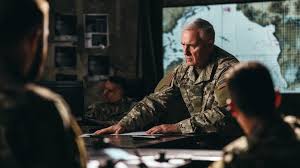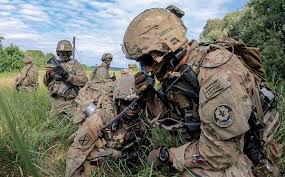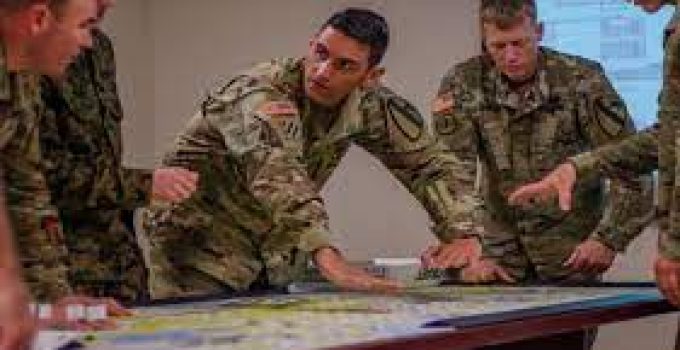Page Contents
ToggleWar tactics are strategic methods employed during combat to achieve military objectives. These tactics have evolved significantly over centuries, adapting to advancements in technology, changes in political landscapes, and shifts in societal structures. At their core, war tactics involve the careful application of resources, troops, and intelligence to outmaneuver the enemy and secure victory.
The study of war tactics is crucial not only for military purposes but also for understanding historical events and the balance of power across nations. Successful tactics can turn the tide of a conflict, sometimes even against overwhelming odds.
The Role of Terrain in Tactical Decisions

Terrain has always been a fundamental factor in shaping war tactics. From ancient battles fought on open plains to modern urban warfare, the landscape influences every aspect of combat. Commanders use terrain to their advantage, often seeking higher ground, dense forests, or river crossings to outmaneuver enemies.
In ancient times, armies utilized natural barriers like mountains and rivers to establish defensive positions. For example, the Battle of Thermopylae showcased the Greeks’ strategic use of narrow mountain passes to hold off a much larger Persian force. In modern warfare, urban environments present unique challenges, requiring specialized tactics for close-quarters combat and the use of buildings as cover.
The Evolution of Infantry Tactics
Infantry, the backbone of many armies throughout history, has seen its tactics evolve dramatically. In ancient times, formations like the Greek phalanx or the Roman testudo were designed to maximize defense and offensive potential. The phalanx relied on tight coordination and long spears to repel enemy attacks, while the testudo provided protection from projectiles.
With the advent of gunpowder, infantry tactics shifted to accommodate firearms. Linear formations became common, allowing soldiers to maximize the firepower of muskets. Over time, trench warfare during World War I demonstrated the necessity of adapting infantry tactics to new technologies, such as machine guns and artillery.
In contemporary warfare, infantry units often operate in smaller, more mobile groups. Modern tactics emphasize versatility, with soldiers trained for various scenarios, from guerrilla warfare to peacekeeping missions.
The Impact of Technology on Warfare
Technological advancements have always shaped war tactics. The invention of the wheel, the development of metallurgy, and the creation of gunpowder revolutionized combat strategies. More recently, advancements in communication, transportation, and weaponry have drastically altered the battlefield.
During World War II, the German concept of Blitzkrieg exemplified how technology could redefine tactics. Combining tanks, mechanized infantry, and air support, Blitzkrieg emphasized speed and surprise, overwhelming opponents before they could mount a proper defense.
In the 21st century, drones and cyber warfare have emerged as significant elements of modern tactics. Unmanned aerial vehicles (UAVs) are used for reconnaissance, targeted strikes, and even logistical support. Meanwhile, cyberattacks can disable communication networks, disrupt logistics, and compromise critical systems, highlighting the importance of integrating technological innovation into strategic planning.
Psychological Warfare as a Strategic Tool

Psychological warfare focuses on undermining the morale and willpower of the enemy. This tactic has been used for centuries, from the display of overwhelming force to the dissemination of propaganda. The goal is to create fear, confusion, or doubt among opponents, reducing their ability to fight effectively.
During the Cold War, psychological tactics were employed extensively. Propaganda campaigns, espionage, and displays of military strength were designed to influence both enemies and allies. In modern times, social media has become a new battleground for psychological tactics, with misinformation and disinformation campaigns used to manipulate public perception.
Guerrilla Tactics and Asymmetrical Warfare
Guerrilla warfare involves small, mobile groups employing hit-and-run tactics against larger, more conventional forces. This approach is often used by insurgent groups or resistance movements against occupying forces or governments.
Historical examples of guerrilla tactics include the strategies employed by the Viet Cong during the Vietnam War and the resistance movements in occupied Europe during World War II. These tactics rely on surprise, local knowledge of terrain, and the support of civilian populations to disrupt and exhaust enemy forces.
Asymmetrical warfare, a broader concept, refers to conflicts where opposing forces have unequal resources or capabilities. In such cases, the weaker side often employs unconventional methods, such as guerrilla tactics, cyberattacks, or terrorism, to counteract the advantages of a more powerful adversary.
Naval and Air Tactics in Modern Warfare
The development of naval and air power introduced entirely new dimensions to war tactics. Naval strategies have ranged from blockades and fleet battles to submarine warfare. The Battle of Midway during World War II demonstrated the importance of aircraft carriers and the strategic use of naval forces in achieving victory.
Air tactics revolutionized warfare, particularly during World War II with the advent of strategic bombing. Air superiority became a critical objective, enabling the control of skies and providing support to ground forces. Modern air tactics incorporate precision strikes, electronic warfare, and the integration of UAVs for reconnaissance and attack missions.
The Importance of Intelligence and Reconnaissance

Gathering accurate intelligence is a cornerstone of effective war tactics. From ancient scouts to modern satellites, reconnaissance efforts provide commanders with vital information about enemy movements, strengths, and weaknesses.
The use of codebreakers during World War II, such as the Allied efforts to decipher German Enigma codes, highlights the critical role of intelligence in achieving tactical advantages. In contemporary warfare, intelligence operations often involve a combination of human assets, electronic surveillance, and cyber capabilities.
Logistics as a Tactical Priority
Logistics, the management of resources and supplies, is a critical aspect of war tactics. An army cannot function without food, ammunition, medical supplies, and transportation. Napoleon famously stated, “An army marches on its stomach,” emphasizing the importance of logistics in sustaining operations.
During World War II, the Allies’ ability to maintain supply lines across the Atlantic was instrumental in their success. Modern tactics incorporate advanced logistical planning, with real-time tracking and automated systems ensuring efficient resource management.
The Ethical Dimensions of War Tactics
While the primary goal of war tactics is victory, ethical considerations indrabet play a significant role. The laws of war, established through international agreements like the Geneva Conventions, aim to limit unnecessary suffering and protect civilians.
Tactics that prioritize civilian safety, such as precision strikes and the avoidance of populated areas, reflect a commitment to ethical principles. However, debates continue over the use of controversial tactics, such as drone strikes or cyberattacks, which may have unintended consequences.
The Future of War Tactics
The evolution of war tactics is far from over. Emerging technologies, such as artificial intelligence and autonomous weapons, promise to reshape the battlefield once again. AI-driven systems could enhance decision-making, optimize logistics, and improve reconnaissance, but they also raise ethical and strategic concerns.
Space warfare is another frontier, with nations developing capabilities to protect or disrupt satellites and other space-based assets. The integration of space tactics with traditional land, sea, and air strategies highlights the growing complexity of modern warfare.
In conclusion, war tactics are a dynamic and multifaceted aspect of military strategy. They reflect the interplay of technology, terrain, psychology, and ethics, shaping the outcomes of conflicts and the course of history. As the nature of warfare continues to evolve, so too will the tactics employed by nations and their militaries.

